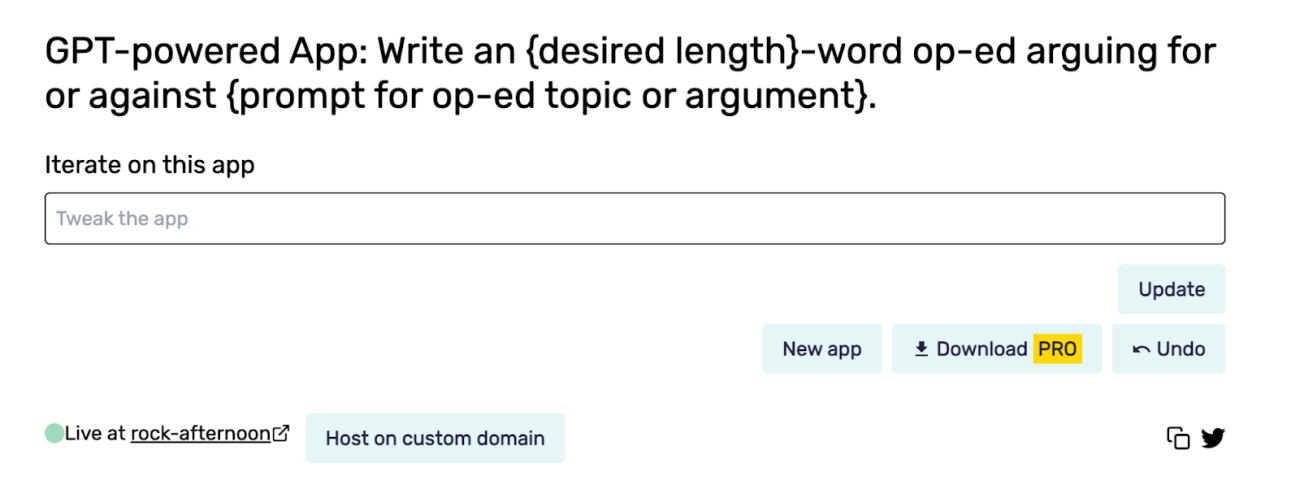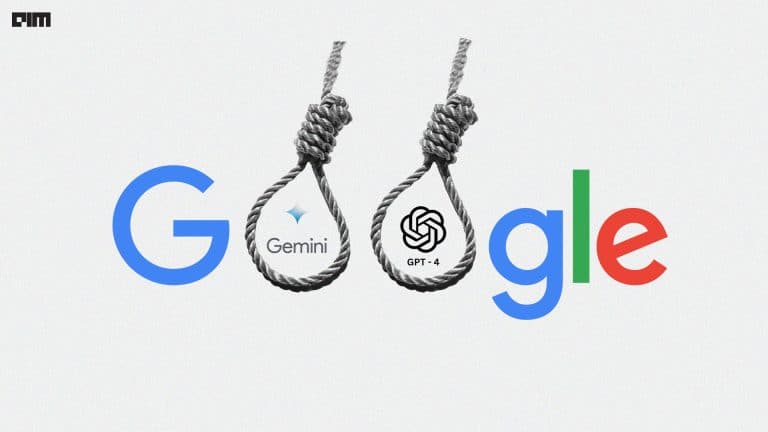|
Listen to this story
|
During the launch of GPT-4, OpenAI’s researchers showed that the LLM could create a website from scratch using just a sketch on paper as a reference. Even as users dream of creating a website from the outset using the power of GPT-4, OpenAI has still not released this capability of their multimodal LLM.
However, Pico Apps’ MetaGPT seems to have taken steps to realise this dream, albeit from a different angle. This GPT-4-powered application can create websites, apps, and more based only on natural language prompts. The service has been used to create dashboards, code-based visualisations, and even a marriage proposal!
What is MetaGPT?
Simply put, MetaGPT is a web application that allows users to build other web applications. The service first asks users what they want to create, and takes the prompt as a basic idea of what the website can be. MetaGPT then asks for a few additional details, such as the required inputs from the user.
The part that makes MetaGPT stand out from other no-code website-building platforms is its integration with ChatGPT. Upon taking the initial prompt and inputs from the user, we can choose to integrate ChatGPT’s functionalities into the application. The prompts encased within curly brackets will be passed on to ChatGPT, which will then generate the required text. This can be done completely without any code or API calls, relying on natural language prompts to serve the user’s purpose.
The service also allows users to iterate on their prompts, showing a visual representation of what the website looks like while GPT-4 codes it. Then, the user is given the option to iterate on the output of the chatbot, with the website recommending the user to go through multiple iterations to reach a good application. These iterations can range from UI/UX changes to bug fixes to complete redesigns of the site.

We tried building a basic website that generates an op-ed given a topic and the desired word length. We prompted the application with the simple sentence “an application that can write an op-ed”. After this prompt, the web app clarified a few additional details, such as what the user input should be and what syntax should be used to pass on the work to ChatGPT.

This advancement in web applications builds upon the promise offered by GPT-4, which OpenAI is still in the process of deploying safely. However, it seems that the AI world is hungry for innovation, and it isn’t waiting for OpenAI to fulfil its dreams.
Taking over OpenAI
Shortly after the launch of GPT-4, OpenAI released ChatGPT plugins. In a move which many called the ‘App Store’ moment for LLMs, the company not only released 12 plugins which allowed the chatbot to extend its functionality, but also released a standard that would allow developers to create more plugins.
However, the expectations for this feature have slowly eroded, as plugins continue to be available for a small percentage of ChatGPT’s users. What’s more, the feature is only available to ChatGPT Plus users, with others needing to join a waitlist for access.
The developer community has found novel ways to deploy the GPT-4 API, picking up on OpenAI’s slack. One only needs to look at the success of AutoGPT, an open-source project looking to allow GPT-4 to function autonomously. Other similar projects include BabyAGI, a GPT API powered task management system, and AgentGPT, a platform to create autonomous AI agents to automate repetitive tasks.
These open-source projects have captured lightning in a bottle, igniting the imaginations of many who wish to use GPT-4 for new use-cases. The hype created by OpenAI around the launch of GPT-4 has not died away, but shifted towards these community-driven projects, as seen by the runaway success of AutoGPT, MetaGPT, Baby AGI and others.
As OpenAI continues to delay the launch of GPT-4 features like multimodality and ChatGPT Plugins, the community is working hard to find ways to deploy this powerful LLM in increasingly innovative ways. While some are just wrappers of OpenAI’s APIs with added functionality like Forefront.ai or AnonChatGPT, others, like MemeCam or Bing Chat use the GPT-4 API to facilitate new use-cases altogether. OpenAI now needs to move faster, or risk their dream being stolen by others who are on the bleeding edge.



















































































